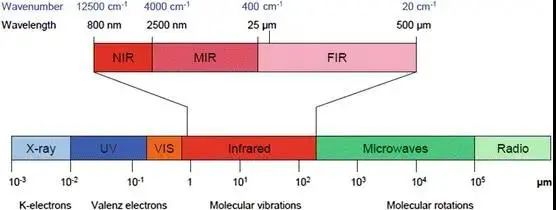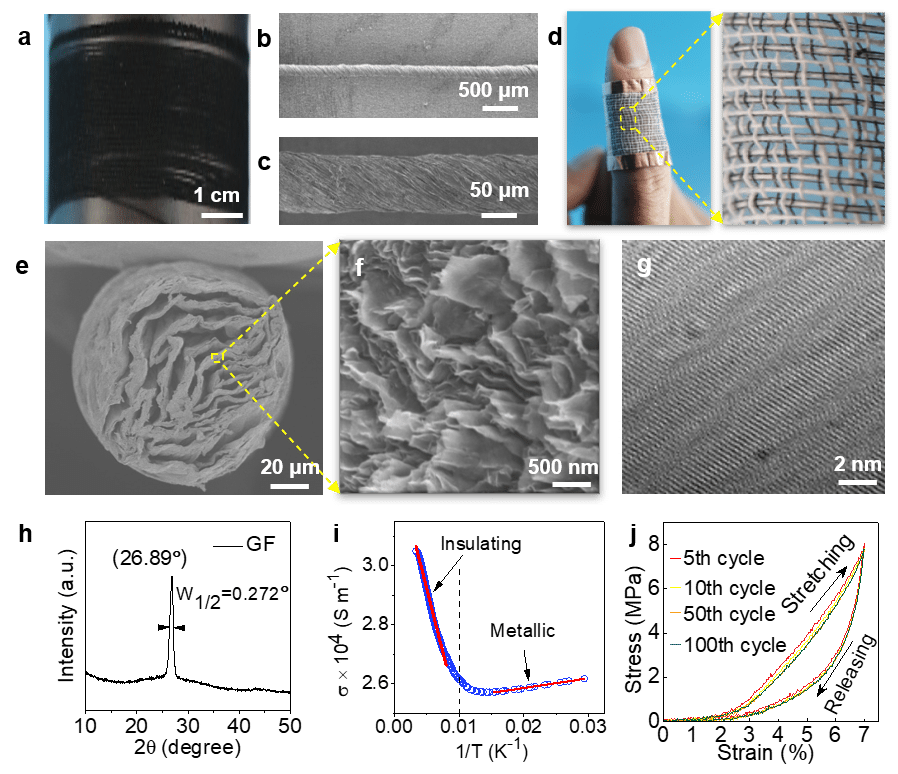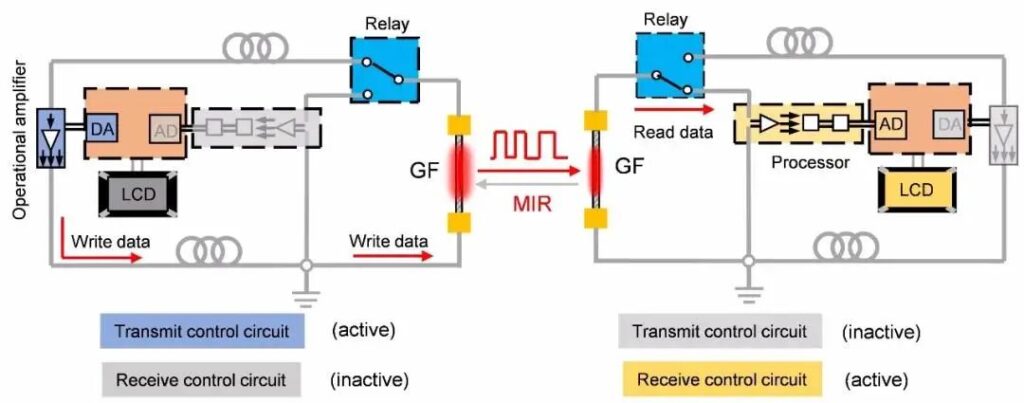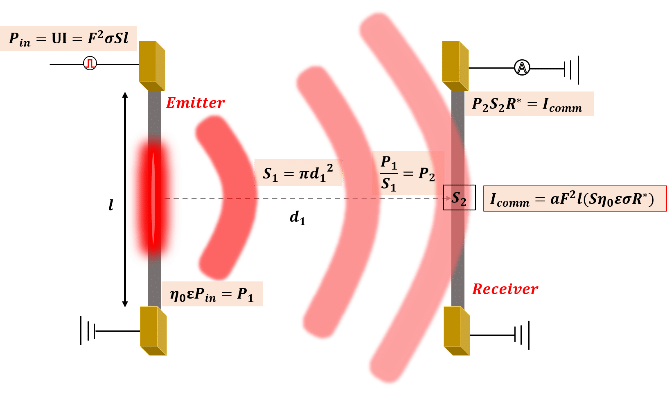Are low emf electric blankets necessary?
Another chilly winter has arrived, and electric blankets have become lifesavers for many. But every year around this time, concerns resurface: Can the electromagnetic fields
Recently, Nature Communications reported a bidirectional mid-infrared communication system based on graphene fibers, which is a collaboration between Gao Chao and Xu Zhen’s team at Zhejiang University and Xu Yang’s team at the School of Micro- and Nanoelectronics, ZJU Center for Science and Technology. The first authors of the paper are Dr. Fang Bo from the Department of Polymer Science and Engineering at Zhejiang University and Dr. Srikrishna Chanakya Bodepudi of the School of Electronics. This work explores the luminescence and detection properties of macroscopic graphene fibers in the mid-infrared region and constructs the first fiber-based bi-directional mid-infrared communication system based on it. The study demonstrates the potential of graphene macroscopic materials for applications in mid-infrared optoelectronic device communication.
Table of Contents
ToggleMid-infrared (MIR) light usually refers to light waves with a wavelength of 2-25 microns, and it is closely related to the activity of living organisms due to the fact that the MIR interval is distributed just within the wavelength range of thermal radiation of living organisms (referred to as far-infrared light in everyday reports and descriptions). Advanced mid-infrared communication systems have important applications in the fields of confidential communication, healthcare, environmental monitoring, meteorological science, and space exploration. Optical communication systems typically consist of two basic functional structural units (i.e., transmitter and receiver) supplemented by other signal processing devices. In conventional communication systems, the transmitting and receiving functions are usually performed by separate devices. If a material can be found that combines both transmitting and receiving functions to achieve bidirectional communication, the communication system can be greatly simplified and made more efficient. With the help of materials such as carbon nanotubes and chalcogenides, the idea of bi-directional communication has been initially realized in the visible and near-infrared regions. However, bi-directional mid-infrared communication systems have not yet been realized due to the performance of the materials and the harsh operating environment.
Graphene, with its atomic-level thickness and extremely high electron mobility, can emit mid-infrared light by carrier coupling or graybody radiation, or can be structurally designed to exhibit optoelectronic responsiveness over a wide spectral range. However, conventional oligomeric graphene has poor absorption of photons and is difficult to make into mid-infrared devices. This work assembles graphene into weakly coupled macroscopic materials, solves the problem of low absorption and low emissivity of graphene, and realizes a high-performance bidirectional mid-infrared communication system.

In this study, continuous flexible graphene fibers were prepared from graphene oxide films by twisting technique and post-treatment. Unlike the previously reported uniaxially oriented graphene fibers, this fiber has two major structural and property changes: the helical configuration of the surface allows the fiber to exhibit an elongation of more than 15% in tensile shape and maintain stable mechanical and electrical properties during multiple cyclic tensile tests; a significant percentage of weakly coupled regions exist even after high temperature carbonization treatment.

Weakly coupled graphene fibers are prepared as a two-electrode photoconductive structure that can detect mid-infrared light in the wavelength range of 2-10 μm. By moving the mid-infrared light source from one section of the electrode to the other direction, a gradual change in the direction and intensity of the detected photocurrent signal can be found, demonstrating that the mechanism of mid-infrared detection of graphene fibers is the photo-thermoelectric effect. The fibers made of multilayer graphene weakly coupled absorb mid-infrared photons, and a transient increase in local temperature occurs. At this time, a gradually weakening electron temperature gradient is generated between the illuminated region and the graphene fiber-metal junction. The hot electrons generated by photon excitation gradually diffuse to the metal electrode section under the gradient field, thus generating a photocurrent signal.
In this process, the weakly coupled multilayer graphene structure effectively reduces the interlayer scattering of hot electrons, thus facilitating the rapid traversal of hot electrons in the millimeter-level graphene macrostructure and achieving a response in the mid-infrared region in graphene fibers. To verify this mechanism, the authors compared the same size of highly oriented pyrolytic graphite (HOPG), a strongly coupled macroscopic graphite body, which did not observe significant photocurrent signals under the same experimental conditions.
Compared to oligomeric graphene materials, the resistance of graphene fibers is three orders of magnitude lower, resulting in larger dark currents at lower electric fields. However, this issue does not limit the outstanding detection capability of graphene fibers, as the photocurrent generated by the photoconductive structure constructed by graphene fibers can reach 0.7 A, much higher than that of oligomeric graphene. This study found that graphene fibers can detect mid-infrared light at a wavelength of 4 μm at a frequency of 0.25 MHz and have a responsiveness of about 0.67 A/W.

(a) Graphene fibers are suspended and fixed between metal electrodes, and the response to mid-infrared light is detected by inputting dark current;
(b) Loading mid-infrared light into different regions of the graphene fiber, photocurrents of different directions and magnitudes can be collected;
(c) Comparison of the responsiveness with different mid-infrared detector devices.
The emission performance test device is similar to the detection performance test device in that both graphene fibers are fixed between two electrodes. An electric field of a certain frequency and intensity is input to the graphene fiber, which causes it to emit mid-infrared light with a wavelength of 2-12 microns. As the electric field is raised, the spectrum is blueshifted, the distribution is gradually narrowed, and the intensity is substantially increased. Converting the instantaneous temperature of the emitting fibers to Planck functions confirms that the luminescence principle is typical of gray-body radiation. For the gray body radiation material, the spectral distribution range and peak of its luminescence is determined by the single temperature of the surface, the higher the temperature the closer to the visible region. The authors found by calculation that when the surface temperature is regulated at 330-700 K, the wavelength of gray body radiation can be controlled in the mid-infrared region. And graphene fibers can reach a heat-resistant temperature of 800 K in air and can work stably in this region. For example, when the input electric field is 3.53 V/cm, graphene fibers can work at 662 K for more than 40 hours.
According to Planck’s formula, the energy radiated by the gray body is closely related to its intrinsic emissivity. In general, the higher the emissivity, the more energy is radiated. In turn, the emissivity is positively related to the absorption rate. Therefore, the emissivity of graphene fibers is two orders of magnitude higher than oligomeric graphene over a wide temperature range, and its radiation efficiency (the ratio of radiation energy to input electric field energy) is also advantageous. The fastest emission frequency that can be observed through commercially available indium gallium arsenic detectors is 10 megahertz, which the authors suggest may be related to the weakly coupled structure of the graphene fibers and the self-supporting structure of the device. The weak coupling and the self-supporting structure limit the thermal diffusion so that the Joule heat generated by the electric field is confined to a multilayer graphene structure, promoting fast and efficient graphene luminescence.

(a) Graphene fibers are suspended and fixed between metal electrodes, and a variable frequency bias is input to make them emit mid-infrared light;
(b) The luminescence spectra of graphene fibers at different temperatures match the theoretical gray body radiation curve;
(c) The luminescence frequency can reach 10 megahertz.
Based on the good transmitting and detecting performance, the authors constructed a bidirectional mid-infrared communication system with two identical graphene fibers. Each graphene fiber is connected to a functional circuit that controls the transmitting and receiving, and the operating states of the transmitting and receiving circuits are automatically switched by a relay. The left and right graphene fibers are placed in parallel at a certain working distance in order to transmit and receive mid-infrared light. Specifically, a digital signal of a certain frequency is input to the left fiber through a digital-to-analog conversion and a series of signal processing modules to make it emit mid-infrared light of the same frequency; at the same time, the right fiber receives mid-infrared light and generates a synchronized photocurrent, which is then converted into a digital signal by the signal processing and analog-to-digital conversion modules to be displayed on the right display. In this way, the transmission of the mid-infrared signal from the left side to the right side is realized. After receiving the signal, the right side fiber can input a reply signal to it. At this time, the control circuit of the right side fiber will automatically switch to transmitting mode through a relay, and the control circuit of the left side fiber will switch to receiving mode to realize the smooth transmission of the reply signal from the right side to the left side.
The mid-infrared communication system reported in this study is very stable and can achieve stable signal exchange and multiple conversations between the two fibers. The system uses a variety of digital/analog conversion and signal processing modules to advance mid-infrared optical communication of graphene fibers into digital mode, initially exploring the application potential. The communication frequency of this system can only reach 125 Hz due to the noise interference of the signal processing module. However, after the authors remove the signal processing module, the communication frequency can be significantly increased to 100,000 Hz, and after further enhancement and optimization, it is expected to be close to the frequency of commercial communication systems.

At the end of the paper, the authors propose a quality factor I* based on the energy transfer process and operating principle of the bidirectional mid-infrared communication system, which can initially predict the desired performance that can be achieved by a mid-infrared responsive material in a bidirectional mid-infrared communication system under a given identical operating environment. The authors also compare graphene fibers with other carbonaceous materials and find that the quality factor of graphene fibers dominates, while other carbonaceous materials or limited by smaller cross-sectional area and lower responsiveness.

The related results were published as “Bidirectional mid-infrared communications between two identical macroscopic graphene fibres” in Nat. Commun. 2020, 11:6368. The work was supported by the National Key Research and Development Program of China and the National Natural Science Foundation of China.
Another chilly winter has arrived, and electric blankets have become lifesavers for many. But every year around this time, concerns resurface: Can the electromagnetic fields
Are Low-Voltage Electric Blankets Safe? Here’s The Shockingly Simple Truth Winter’s coming, and you’re relying on that electric blanket to survive – but is sleeping
Winter’s back, and getting into bed feels like climbing into a freezer. As someone who’s always cold, an electric blanket is my survival tool. But
TL;DR: Y’all, heating tech just got a major glow-up. Graphene blankets aren’t just another product—they’re a total game-changer. We’re talking next-level warmth, wellness-based design, and
Experience the excellent energy-saving underfloor heating brought by new technology
We’ll get back to you in 1 business day.